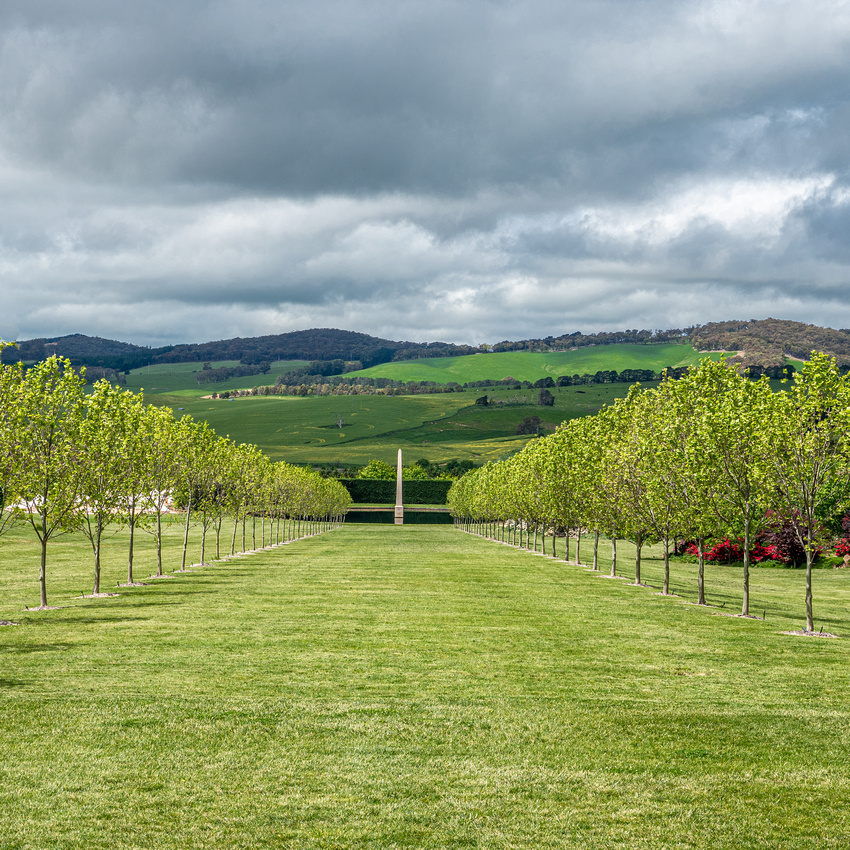Mayfield - From Sheep Farm to Botanical Gardens


We arrived at Jenolan Cabins on Monday 26 October 2020. The cabins are located five kilometres from Jenolan Caves and 22 kilometres from Oberon. Misty rain and a temperature of six degrees. This was very pleasant as the Oberon countryside looks spectacular in this type of weather. The early pioneers knew Oberon as Bullock Flat. Permanent settlement in the district began in 1839 but it was not until 1863 that the name was changed to Oberon (taken from the King of the Fairies in Shakespeare's "A Midsummer Night's Dream") and it was declared a village.
On Tuesday we drove half an hour to Mayfield Gardens which is a botanical garden in the Central Tablelands of New South Wales. It is a fifteen minute drive from Oberon. the garden is one of the world's largest privately owned cool climate gardens, lying within a 2,000 hectare agricultural area. It took us 75 minutes to view everything walking at a leisurely pace. Plant varieties include Viburnum, Rhododendron, Azalea, tulip, daffodil, Hyacinth, Hydrangea, Red Oaks, Copper Beech, a large range of Maples and London plane trees to name a few.
The site was originally purchased as a working sheep farm. The story of Mayfield Gardens began in 1984. Garrick Hawkins started readying a small personal garden in 1984 in an association with local nurseryman and landscaper Peter D'Arcy. Three-decades later it evolved to become one of the largest and most expensive cool climate gardens of its kind. Mayfield Gardens initially opened to visitors in 2008, for one weekend, as a charity event. It was extremely popular.
Owned by the Hawkins family, Mayfield Gardens is open 363 days of the year. Together with the Hawkins’ Family Garden, they cover more than 64 hectares.
The Hawkins’ Family Garden is the private garden portion of the Hawkins family, which is an additional 49 hectares beyond Mayfield Garden and is open four 16 day periods each year. It features the second largest maze of its kind in Australia and plant species such as dahlias, zinnias, poppies, delphiniums, lilies, hollyhocks and lupins. The area also includes an introduced pine forest with an understory of rhododendrons and ferns, a chicken coop and a rose garden. It also has hybrid tea, wisteria, climbing hydrangea & Juniper. The heath gardens include Erica and Calluna species. The lake and boardwalk garden beds are aggregated with many types of Rhododendron and Mollis Azaleas.
Mayfield employs over 60 full-time local people across many trades, from stonemasons, painters, plumbers, welders, construction workers, equipment operators, to engineers, draftspeople, surveyors, landscapers, irrigators, marketing, event and hospitality services.
The Cunningham’s Skink (Egernia cunninghami) (you can see a photo in the photo gallery)is a sun-loving variety of spiny-tailed skink. The species is named in honour of Alan Cunningham (1791 – 1839); explorer and botanist, who collected the first specimen in the Blue Mountains. I mention this because they are so prevalent throughout the gardens. Most skinks have very smooth skin but this particular variety has spiny scales which protects them from predators in the natural environment which is predominately rocky outcrops. If a predator tried to catch them, their spines would lodge in rock crevices preventing them from being captured. I could identify them because in our early teens, myself and my brother Chris kept a variety of different lizards as pets.